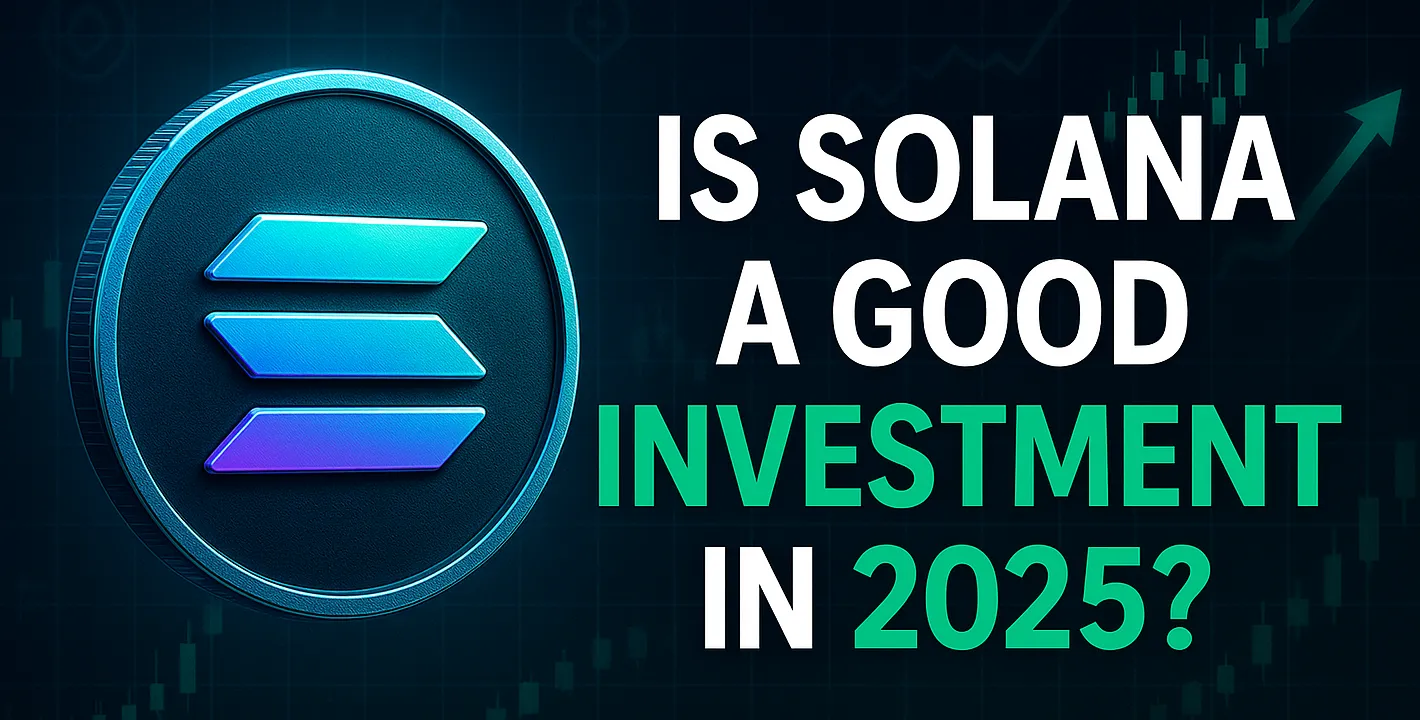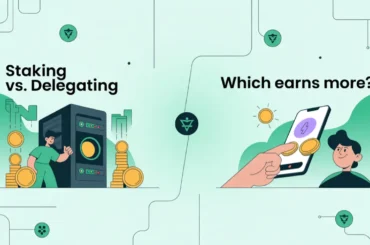There are many fascinating prospects in the cryptocurrency space, and Solana (SOL) has become one of the most prominent players. Solana has drawn interest from both tech enthusiasts and investors due to its lightning-fast transactions and extremely low fees. The crucial question is whether Solana is merely hype or if it would be a wise investment for your future. This guide will examine Solana’s technology, pricing history, practical applications, and expert predictions for 2025 and beyond in order to determine whether it is a wise investment.
What Is Solana (SOL)?
Let’s begin with the fundamentals. Consider Solana, a blockchain platform designed to run decentralized apps (dApps), as an extremely fast digital highway for cryptocurrency projects. Anatoly Yakovenko, a former Qualcomm engineer, introduced it in March 2020 with the goal of developing a blockchain that could process massive volumes of transactions without experiencing any lag or incurring significant costs.
What distinguishes Solana? It all comes down to scalability and speed. In contrast to more traditional blockchains like Bitcoin or Ethereum, Solana processes transactions at a speed of up to 65,000 per second thanks to a special system called Proof of History (PoH) in conjunction with Proof of Stake (PoS).
Here’s a quick rundown of Solana’s core features:
- Speed: Handles thousands of transactions per second.
- Low Fees: Costs less than a penny per transaction.
- Scalability: Can grow without getting bogged down.
- Developer-Friendly: Makes it easy to build apps and projects.
If you’re new to crypto, think of Solana as a next-generation blockchain that’s trying to solve the problems of slow speeds and high costs.
How Solana Works: The Technology Behind It
So, how does Solana pull off its impressive performance? It’s all about its tech, explained in simple terms.
Proof of History (PoH)
To agree on what happened when, most blockchains require back-and-forth communication. Everything is automatically timestamping thanks to Solana’s Proof of History, which functions similarly to an internal clock. This eliminates small talk and speeds up transactions.
Proof of Stake (PoS)
In order to help manage the network, Solana also uses Proof of Stake, in which users known as validators “stake” their SOL tokens. It’s similar to making a deposit to demonstrate your reliability. Unlike Bitcoin’s energy-hungry mining, this keeps the system safe and environmentally friendly.
Why It’s Faster Than Ethereum
Ethereum is a big player, but it can only handle 15–30 transactions per second, and fees can get pricey. Solana’s PoH lets it process transactions all at once (in parallel), while Ethereum does them one by one. Here’s a quick comparison:
| Feature | Solana | Ethereum |
|---|---|---|
| Speed (TPS) | Up to 65,000 | 15–30 |
| Fees | < $0.01 | $1–$50 (varies) |
| Block Time | 0.4 seconds | 12–15 seconds |
This speed and cost advantage is why many call Solana an “Ethereum Killer.”
Solana’s Price History and Growth
Solana’s price journey has been quite unpredictable. SOL was only $0.77 when it first launched in 2020. It reached its all-time high (ATH) of $260 by November 2021, during a crypto boom a huge jump! It recovered from a difficult 2022 to reach about $150 by the middle of 2025.
Here’s a look at Solana’s price milestones:
| Year | Starting Price | Ending Price | All-Time High |
|---|---|---|---|
| 2020 | $0.77 | $1.60 | – |
| 2021 | $1.60 | $179 | $260 |
| 2022 | $179 | $10 | – |
| 2023 | $10 | $100 | – |
| 2024 | $100 | $150 | – |
| 2025 | $150 | ? | ? |
Today, Solana’s market cap is over $70 billion, putting it among the top cryptocurrencies. Curious about a Solana price prediction? We’ll get to that later!
Solana vs Ethereum vs Cardano: Which is Better for Investors?
Comparing Solana to other well-known platforms like Ethereum and Cardano is helpful when considering investing in it. Although each has advantages, Solana is a strong candidate due to its speed and cost.
Here’s a comparison:
| Feature | Solana | Ethereum | Cardano |
|---|---|---|---|
| Speed (TPS) | 65,000 | 15–30 | 250 |
| Fees | < $0.01 | $1–$50 | $0.17 |
| Adoption | Growing | Widespread | Growing |
| Developer Activity | High | Very High | Moderate |
- Solana: Lightning-fast and cheap, great for new projects, but still building its reputation.
- Ethereum: The king of dApps with tons of users, though fees can sting.
- Cardano: Secure and research-driven, but slower and less adopted so far.
For investors, Solana vs Ethereum is a hot debate. Solana’s edge in performance could make it the best crypto investment in 2025 for growth seekers.
Use Cases and Real-World Adoption of Solana
The Solana blockchain isn’t just tech talk it’s being used in the real world. Here’s how:
DeFi (Decentralized Finance)
DeFi apps like Serum and Raydium, which allow you to trade or lend cryptocurrency without banks, are powered by Solana. It is ideal for this because of its low fees.
NFTs and Marketplaces
Admire digital art? Because they are less expensive than Ethereum, Solana’s NFT marketplaces, such as Magic Eden, are flourishing. Here, creators and collectors are swarming.
Payments
Businesses can instantly accept SOL with Solana Pay. Shopify introduced Solana Pay in 2023, enabling cryptocurrency payments for millions of stores.
Partnerships
Well-known companies like Visa and Google Cloud have partnered with Solana, demonstrating their strong belief in its potential.
Gaming and dApps
Solana’s speed helps games like Star Atlas run smoothly. It demonstrates how adaptable this blockchain is.
These applications highlight Solana’s expanding ecosystem, which is important for anyone making an investment there.
Staking SOL: Passive Income or Risky Move?
Want to earn extra SOL? Solana staking lets you lock up your tokens to support the network and get rewards.
How It Works
With a validator someone who manages the network you “stake” SOL. You receive an annual percentage yield (APY) of roughly 7% in exchange. You can unstake at any time because there is no lock-up period.
Risks and Benefits
- Benefits: Easy passive income with decent returns.
- Risks: If a validator messes up, you might lose some SOL. Plus, price drops could eat into profits.
Here’s how Solana staking stacks up:
| Crypto | APY | Lock-Up Period |
|---|---|---|
| Solana (SOL) | 7% | None |
| Ethereum (ETH) | 4–6% | Until unstaked |
| Cardano (ADA) | 5–6% | None |
It’s a solid option for passive income if you’re holding SOL long-term.
Expert Predictions: What Analysts Say About Solana
What’s the Solana price prediction for 2025 and beyond? Experts have mixed views:
- CoinTelegraph: Sees SOL hitting $520 by 2025 if adoption grows.
- CoinDesk: Predicts a range of $300–$600, depending on market conditions.
- Bitwise: Suggests $2,318 in a bear case and $6,636 in a bull case by 2030.
A Solana ETF is also generating a lot of interest. It has a 92% chance of being approved in 2025, according to Polymarket, which could cause its value to soar. However, some caution that competition and previous outages could slow it down. This crypto analysis of Solana demonstrates both potential and prudence.
Pros and Cons of Investing in Solana
Is Solana a good investment? Let’s weigh the pros and cons.
✅ Pros
- Fast, Cheap Transactions: Perfect for everyday use and dApps.
- Strong Community: Tons of developers and fans.
- Growing Ecosystem: DeFi, NFTs, and more.
- Institutional Interest: Backed by big names like Visa.
❌ Cons
- Network Outages: Downtime in 2021–2022 raised concerns.
- Centralization Worries: Some say it’s less decentralized than rivals.
- Competition: Ethereum and others are fighting for the top spot.
- Regulatory Risk: New laws could shake things up.
Risks to Consider Before Investing
Before jumping in, here are some risks:
- Past Downtime: Although it’s getting better, Solana’s network has crashed a few times.
- Competition: New blockchains like Avalanche and Ethereum’s updates pose risks.
- Big Picture: SOL may be impacted by changes in the economy (such as inflation) and cryptocurrency regulations.
We are reminded to exercise caution by this Solana crypto analysis.
Solana in 2025 and Beyond: A Long-Term Look
In 2025, might Solana be the greatest cryptocurrency investment? It appears to have a bright future. Large potential is suggested by initiatives like Firedancer, a new technology that increases dependability, and an expanding ecosystem. By 2026, Solana may even pose a threat to Ethereum’s hegemony if it continues to draw developers and users. If everything works out, long-term holders could reap significant benefits.
Solana Investment Potential in 2025: Key Factors
In conclusion, is it wise to invest in Solana?
So, is Solana a good investment? It has incredible technology, practical applications, and professional optimism. However, there are hazards, such as market fluctuations, competition, and outages. Solana might be worth a try if you can live with some uncertainty and have faith in its development. Crypto is unpredictable, so don’t bet the farm!
Disclaimer:
This isn’t financial advice. Do your own research before investing.
FAQs: Your Questions Answered
Is Solana a safe investment?
It’s as safe as most cryptos risky but with potential. Its tech is strong, but prices can jump around.
Can Solana reach $1,000?
Maybe! It depends on adoption and market trends. Some experts think it’s possible by 2030.
How do I buy and store Solana?
Buy SOL on exchanges like Coinbase or Binance. Store it in wallets like Phantom or Ledger.
What are the best wallets for Solana?
Try Phantom, Solflare, or a Ledger hardware wallet for safety.
Is Solana better than Ethereum?
It’s faster and cheaper, but Ethereum has more users. It’s a toss-up based on what you value.










